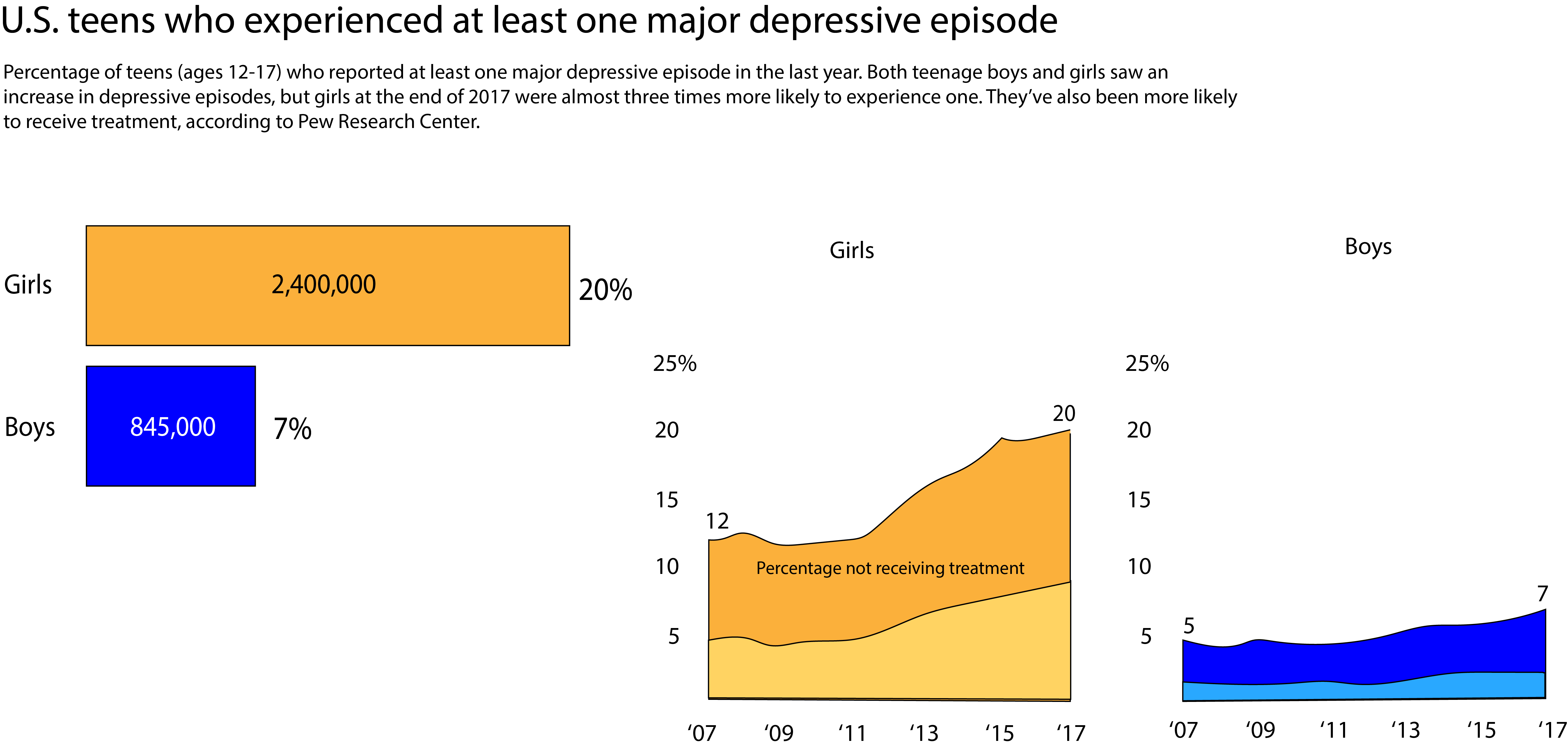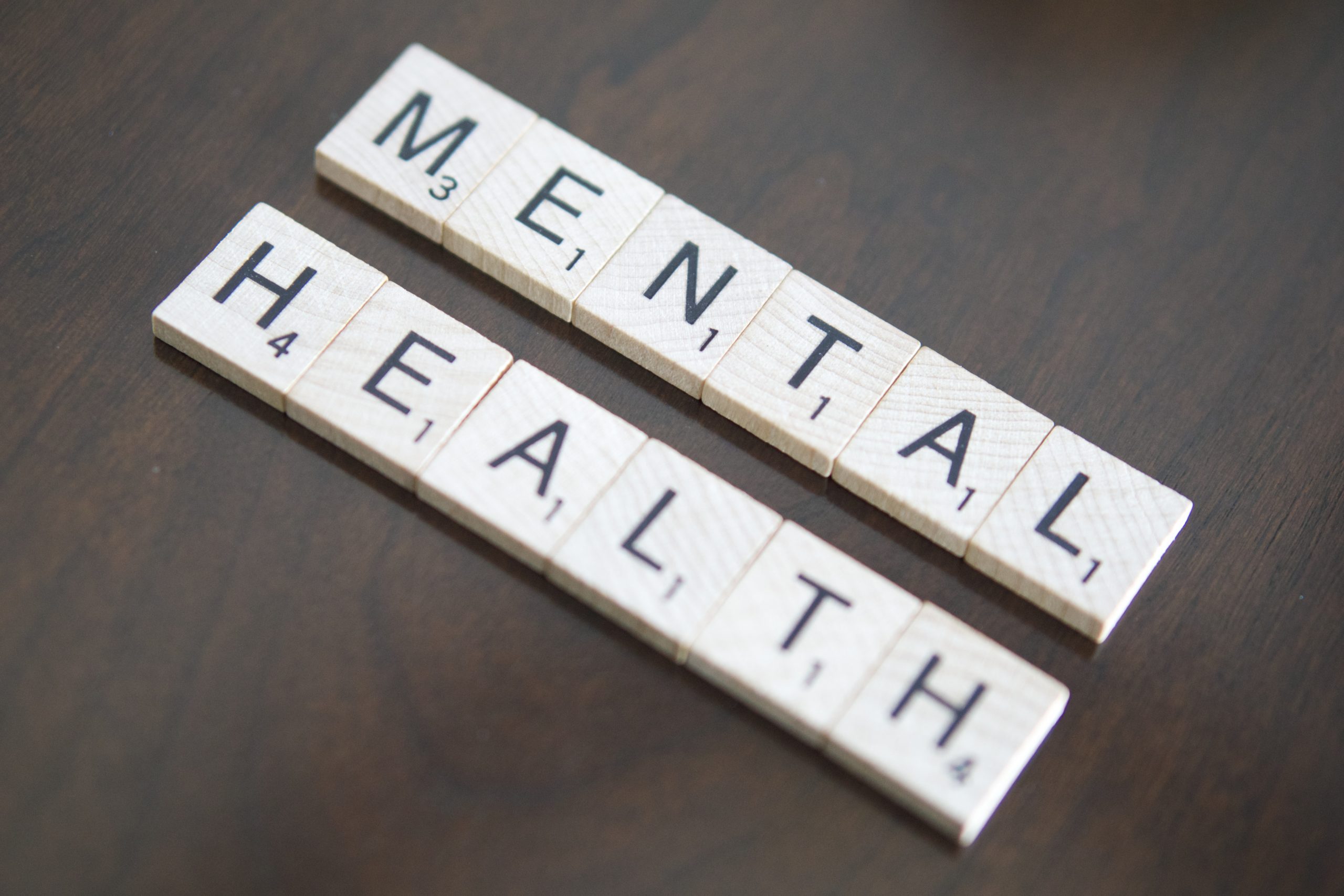Mental health disorders among American teenagers have soared in the past fifteen years.
From 2007 to 2019, the share of adolescents who reported having a major depressive episode jumped 60%, from roughly 2 million to about 3.2 million, according to the Pew Research Center. The number of high school students in the U.S. who reported persistent feelings of sadness or suicidal ideation also increased, according to data from the Centers for Disease Control and Prevention.
But these mental health issues have impacted certain demographics more than others. More than 46% of teenage girls – ages 12 through 17 – reported experiencing sadness or hopelessness in 2017, according to the CDC. That same year, nearly one in five teenage girls reported having at least one major depressive episode – almost three times more common than teenage boys.
While teenage boys were less likely to have a “major depressive episode,” only 33% of depressed adolescent boys received treatment, whereas 45% of teenage girls with recent depressive episodes received treatment.

Minority groups such as Hispanics and the LGBTQ community were also more likely to experience persistent feelings of sadness or hopelessness, according to the CDC.
Despite this recent uptick, overall suicidal thoughts among U.S. teens has dropped in the last 30 years. The share of teens who have seriously considered attempting suicide fell from 29% in 1991 to 18.8% in 2017, according to the CDC, but suicide attempts since 1991 have risen.
The habits of American teens have also shifted since the 1990s.
Drug use and alcohol consumption have dropped from 1991 to 2019. About 50% of teenagers in 1991 regularly consumed alcohol, but that share fell to 29.2% in 2019, according to CDC data.
Cigarette use has also declined since 1991, despite a recent uptick in electronic vape use. Additionally, marijuana use is on the rise but still below the record high of 26.7% of teens in 1999, according to the CDC.
The share of U.S. teenagers who have ever tried Illicit drugs – including cocaine, inhalants, heroin, methamphetamines, ecstasy, or hallucinogens – is down as well, dropping from 28.8% in 1999 to 14.8% in 2019.
The percentage of sexually active teenagers has also declined. In 1991, around 54% of teens have had sex at least once, compared to 38.4% in 2019.
But one of the most significant changes for American teens is time spent on a computer – including smartphones, tablets and video games. In 2003, around 22.1% of teens spent three or more hours per day on a computer, compared to 46.1% in 2017, according to the CDC.
Along with a surge in screen time, teens in the U.S. have also been getting less sleep and have been less physically active over the past 15 years.


You must be logged in to post a comment.